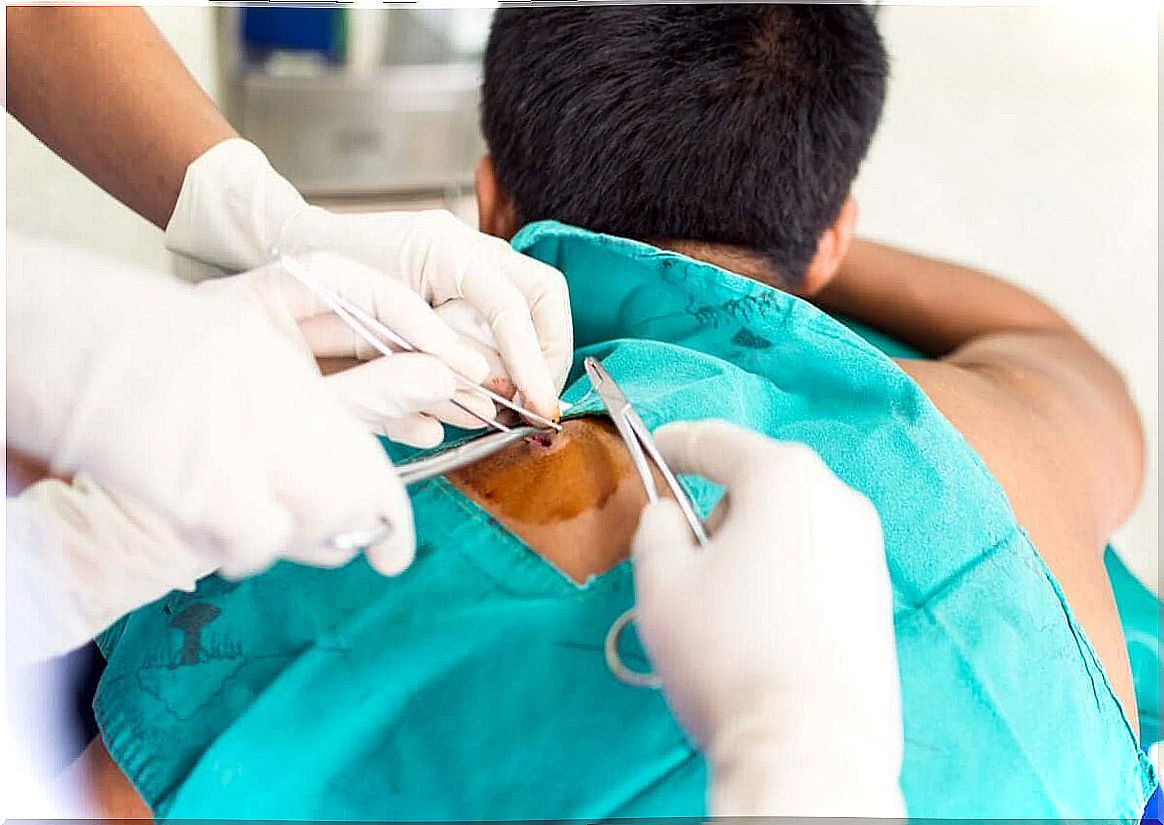Everything You Need To Know About Benign Tumors

Benign tumors on the skin are a group of conditions that can have a variety of causes. Their classification is often based on the area where they occur, their size, color, distribution and symptoms. In any case, apart from the aesthetic change, they do not cause any major problems.
According to an article published in the Journal of Cutaneous and Aesthetic Surgery, these changes occur when there is a proliferation of one or more components of the skin.
And while they’re usually not serious, you should see your dermatologist so he or she can evaluate them. Would you like to know more about this topic? Then keep reading!
Why do benign tumors appear?
Like all neoplasms, a benign tumor is a mass of abnormal cells. However, what sets them apart from malignant tumors is that they do not have the ability to surround tissues or spread to other parts of the body.
This type of tumor lesions is surrounded by a protective capsule that facilitates their extraction. Blood tests, imaging tests (such as an X-ray), or a biopsy, in turn, can tell whether the tumor is malignant or benign.
Types of Benign Tumors

Most tumors that appear on the skin are benign. Still, you should have them checked by the dermatologist. Most people will experience a wide variety of skin growths and changes throughout their lives.
Doctors, with the appropriate training and experience, will be able to classify most of these skin lesions through a clinical examination.
adenoma
An adenoma is a benign epithelial neoplasm that arises from the sebaceous or sweat glands. Examples of adenomas include the following:
- Sebaceous adenoma
- Apocrine Tubular Adenoma
- Hydradenoma
Fibroma
The dermatofibroma, also known as ‘fibrous histiocytoma’, is one of the most common soft tissue skin lesions. In fact, it represents about 3% of samples received by dermatopathology laboratories.
If the classic clinical and pathological features are present, the diagnosis is usually straightforward. It is more common in middle-aged adults and slightly more common in women. They are often located on the limbs and look like small, raised, hyperkeratotic skin nodules with a reddish-brown surface.
lipoma
Patients with a lipoma often complain of a soft, mobile mass of tissue that can be felt under the skin. These are usually painless unless they penetrate the joints, nerves, or blood vessels.
In general, they are benign entities and there is no risk of malicious transformation, their prognosis is very good. Once they’re removed, they usually don’t come back. However, it is imperative that the fibrous capsule surrounding the lipoma be completely removed to prevent this.
myoma
Leiomyomas are benign tumors arising from smooth muscle and are most commonly seen in the uterine myometrium, gastrointestinal tract, skin, and lower extremities of middle-aged women.
Clinically, connective tissue tumors, for example fibroids and lipomas, may present findings similar to those of leiomyoma, therefore a differential diagnosis should be made.
Osteochondroma
Osteochondromas are common. In fact, they represent 20 to 50% of all benign bone tumors. They can be single or appear as several. The solitary form has a good prognosis and the malignant transformation occurs in 1% of cases.
In addition, most solitary lesions tend to be small and asymptomatic. However, the diagnosis and treatment of this condition requires the collaboration of various health professions.
Birthmark (nevi)
Nevus are pigmented skin lesions that can appear from birth and can become cancerous over time due to excessive sun exposure without adequate protection.
In addition to evaluating features A to E of a pigmented lesion, there are specific dermatoscopic patterns to further guide the examination.
We strongly recommend using sunscreen and self-examination to prevent the development of melanoma. We also recommend avoiding excessive exposure to tanning beds.
Symptoms of Benign Tumors
Not all benign tumors show a symptomatology. However, due to their size, they can be easily located by palpation. Some of their key features include the following:
- Pain from compression of surrounding tissues.
- Volume or raised surface.
- paresthesia.
- Itch.
Correct diagnosis of benign tumors

In most cases, when patients go to a surgeon because of a lump , the diagnosis is made by an excisional biopsy. Some benign tumors may recur after incomplete excision.
Many of the nodules the surgeon removes may not be examined by pathological anatomy, and those that are may be reported as benign skin tumors without further characterization.
According to the American Family Physician, any lesion whose diagnosis is uncertain should be biopsied for histopathology to rule out malignancy.
What are the therapeutic options?
Treatment of benign tumors is usually for aesthetic reasons. If deemed necessary, it ranges from simple surgical excision for single lesions or multiple tumors unresponsive to other modalities, to Mohs micrographic surgery for lesions at critical anatomical sites.
There are also destructive physical modalities that the treating physician will evaluate based on the consequences or type of healing of the affected person. Some of the treatment options include the following:
- Excision with scissors and planers
- Curettage with electrodesiccation
- Skin abrasion
- Chemical destruction with salicylic acid
- radiotherapy
- Laser surgery and cryotherapy
It is important to consult a dermatologist
It is true that benign tumors usually do not cause any major problems. Although they look different, they usually pose no danger. Still, it’s important to see your dermatologist for a revision, as you shouldn’t rule out the presence of other more serious problems.
Fortunately, there is currently a wide range of therapeutic options to eliminate these tumors when they pose an aesthetic problem. So the professional is the one who guides you to the best alternative!









